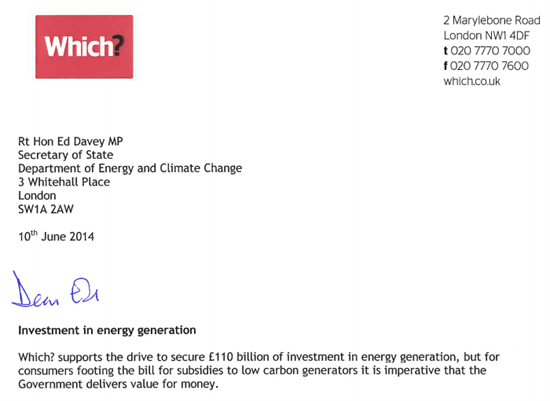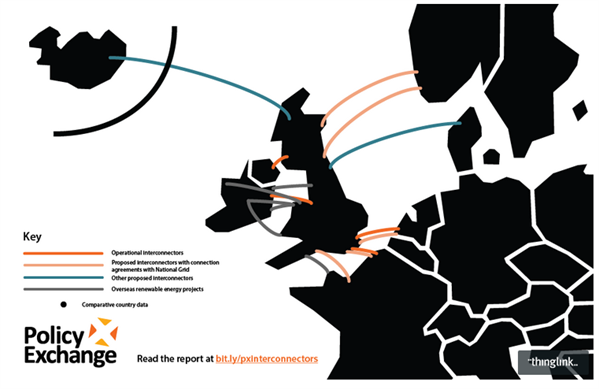Simon Evans
12.06.2014 | 12:15pmThe government’s new system to allocate green energy subsidies is called contracts for difference (CfDs).
The government plans to use auctions to annually divide up a fixed pot of money to support established forms of renewable power. Different technologies will compete against each other for support. Other less mature technologies may not have to compete for money initially, on the basis that they need the support more.
Best value for consumers
Consumer group Which? supports the scheme, but wants the money – which comes from a levy on household energy bills – to deliver the best value possible. Introducing competition more quickly for less-established technologies would help ensure this happens, it argues in a letter to the government seen by Carbon Brief.

It suggests offshore windfarms, for example, are being unfairly shielded from competition. Offshore developers should be forced to compete against each other for subsidies, Which? says, in theory driving costs down. This could happen even if offshore wind is insulated from competing against cheaper onshore wind, or power stations converting to burn wood instead of coal.
Massive power cables under the sea
Centre-right thinktank Policy Exchange also has views on how the scheme could be improved. It suggests allowing foreign green energy schemes to compete against those in the UK for government cash. Money could go to windfarms in Ireland, for instance, or hydropower schemes in Norway. The idea would be to deliver low-carbon power at the least cost.
Policy Exchange thinks that allowing foreign low-carbon energy projects to bid for CfDs would also indirectly give developers an incentive to build more interconnectors – large undersea power cables that allow trade in electricity between the UK and other countries.
It points out that France, Norway and Iceland all have much cheaper and much greener electricity supplies than the UK. French power is 36 per cent cheaper than the UK’s and is 85 per cent lower carbon because most of it comes from nuclear or hydro. Norway gets its electricity almost exclusively from hydropower, making it 83 per cent lower carbon and 25 per cent cheaper than UK supplies.
Cheaper, cleaner power from overseas?
Policy Exchange suggests households in the UK could save up to £1 billion per year if there was more interconnector capacity allowing greater access to this cheaper, cleaner energy.
There are already four interconnectors between the UK, France, Netherlands and Ireland (orange lines below). These have a combined 4 gigawatt capacity and supplied 3.2 per cent of UK electricity in 2012.
The UK’s National Grid has approved the building of a further 5.8 gigawatts of planned interconnector capacity (peach lines). More speculative proposals include links to the Netherlands and Iceland (blue lines). The grey lines show overseas renewable energy projects that could deliver power to the UK through interconnectors.

Subsidising foreign power plants?
Handing money from energy bill levies to overseas renewable power firms could prove politically challenging. But there is precedent. Foreign firms are already heavily involved in the UK energy sector – EDF is owned by the French government, and both E.On and npower are German-owned.
If the plans work out, then combined with greater interconnection, making it easier for technologies and suppliers to compete with each other for subsidies could mean that your future kettle will be boiled by Norwegian hydropower or German biomass.

